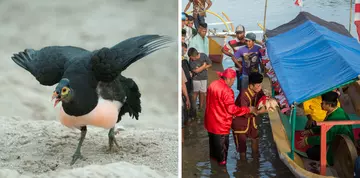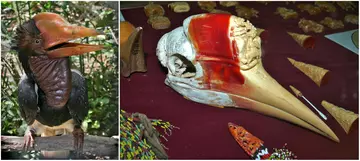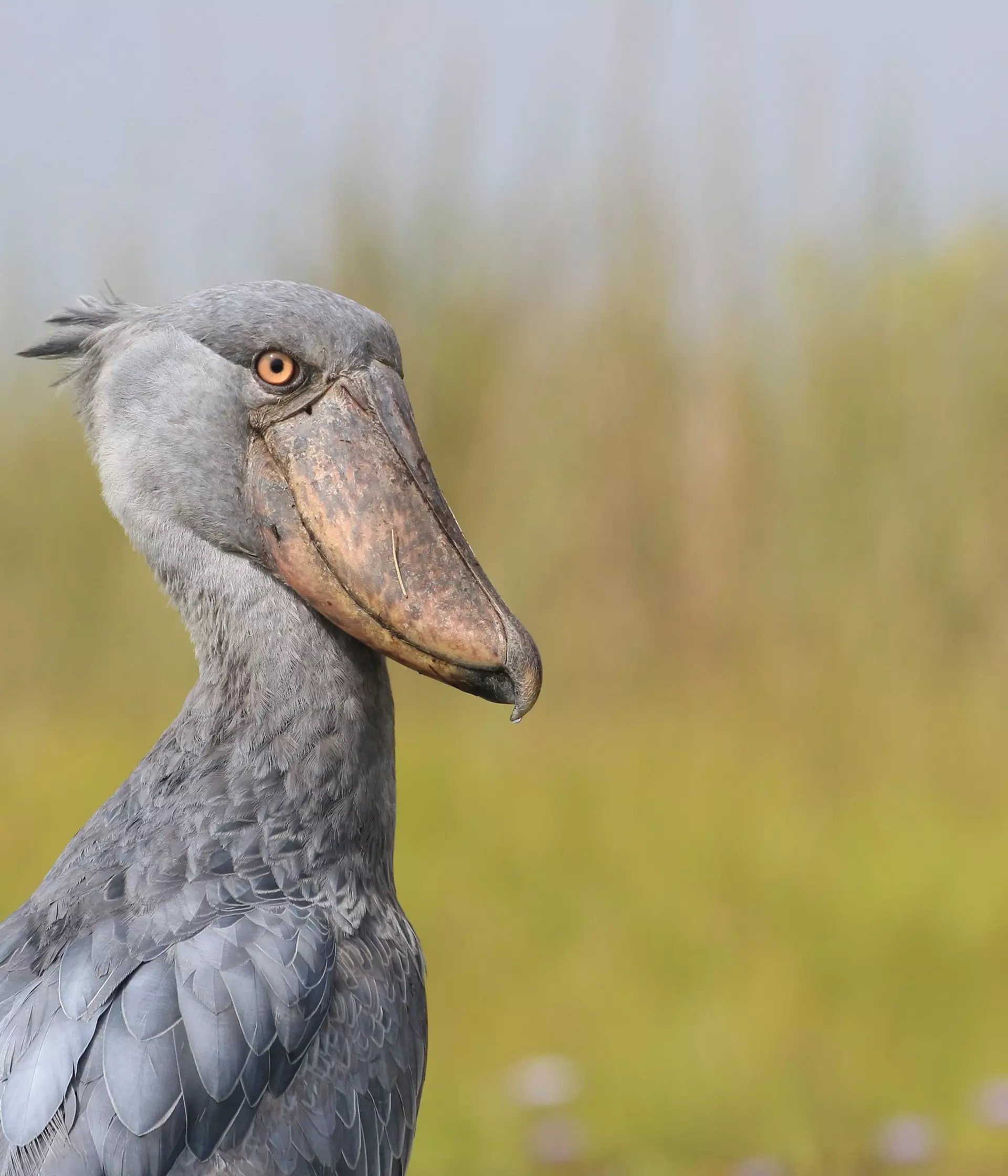
First-of-its-kind study reveals the human benefit of protection some of the world's weirdest and most unusual birds. Lead author ZSL's Rikki Gumbs explains the importance of saving these unique species
Biodiversity provides pretty much everything humans need to survive, from clean air and water to food, medicine, fuel and even building materials. Maintaining biodiversity is of great importance for not only for the benefit of people but also to conserve Earth’s vast diversity of incredible organisms and ecosystems; while Funnel-web Spider venom prevents brain damage in stroke patients, milk from Tasmanian Devils may hold the key to winning the fight against antibiotic-resistant bacteria.
Unfortunately, society’s ever-increasing reliance on biodiversity to provide these benefits and sustain economic growth through unsustainable means is now driving unprecedented declines across species and habitats worldwide.
The cultural importance of birds
Birds in particular have been a constant source of not only material benefits but also of cultural, spiritual and recreational benefits to people around the world for millennia. Yet threats such as habitat loss, unsustainable levels of exploitation and the introduction of invasive species have led to bird populations across the world declining, threatening the loss of not only some of the most unique and important species on Earth, but also the benefits they provide to people from a huge variety of cultures.
The Kagu (left) (Rhynochetos jubatus) is a large flightless bird from New Caledonia that held cultural significance to the to the Indigenous Kanak people and is the country’s national bird is now Endangered following the introduction of dogs and trappings of the bird for the European pet trade. The Shoebill (right) (Balaeniceps rex) is one of the most evolutionarily distinct birds in the world and is threatened by its collection for food and the international pet trade.
Protecting the world’s most unique birds
Given their global cultural and socioeconomic importance, we set out to use the world’s birds as a case study to test whether prioritising sets of species for conservation based on certain measures of biodiversity could reliably safeguard those species that are of known benefit to people. With our results now published in Science Advances, we wanted to explore whether prioritising the world’s birds by their evolutionary history would capture benefits - something which has long been hypothesised to be the case but for which there is limited evidence in the animal world.
Sets of species with more varied and divergent evolutionary histories are expected to possess more unique characteristics—how they look, behave and function—and as a result have greater fundamental diversity. For example, we can intuitively recognise that we share a greater number of characteristics with our closest evolutionary relatives, the Great Apes (chimpanzees, the bonobo, gorillas, orangutans), than we do with much more distant evolutionary relatives such as crocodiles, cockroaches, orchids, and mushrooms.
Species that represent large amounts of unique threatened evolutionary history are known as EDGE species – standing for Evolutionarily Distinct (ED) and Globally Endangered (GE). This study is part of our wider work focusing on these species – including our award-winning EDGE of Existence programme, which prioritises such species for conservation action through local conservation leaders.

The Maleo is a vital part of Banggai tradition, where the eggs were historically presented to the Banggai king each year before being consumed. The eggs are now forming part of efforts to establish healthy populations. Image credit: left: Kevin Schafer; right: Wikimedia Commons.
How does protecting biodiversity benefit people?
One key benefit to people we were interested in exploring, and is quite unique, is called ‘biodiversity option value’. This is the idea that the maintenance of biodiversity is in itself a benefit to people, as maintaining a greater diversity of unique characteristics of species will in turn maintain a greater diversity of yet-to-be-discovered benefits to people.
Option value has long been linked to the maintenance of evolutionary history, given that all the characteristics we treasure in life on Earth are the result of varied and disparate evolutionary trajectories. However, the existence and nature of currently unknown benefits are, by their very definition, impossible to know, and there has therefore been very little scientific evidence to support the link between evolutionary history and future options for people.
To do this, we used an incredible dataset from the IUCN Red List that documents all known consumptive uses of the world’s birds, from their use for food, fuel (yes, fuel! People use the fat of the Oilbird as fuel for cooking), and as pets or zoo specimens, to their use in traditional medicine and for handicrafts or jewellery. Using this data we were able to specifically look at whether maximising the amount of evolutionary history being protected would help capture large amounts of future, unknown benefits.
Most biodiversity benefits that we enjoy today were previously unknown by the first humans that appeared in Africa roughly 200,000 years ago. Some of the species that they were living alongside are still living with us today, while others have gone extinct. We may not be able to physically travel back in time to this point in time and see how different events could have influenced which species disappeared and which ones stuck around, but we can do the next best thing – simulations. Using the Red List data we were able to create different alternative histories where species were either selected to survive due to having the highest amount of evolutionary history, or at random.
We found that maximising bird evolutionary history would generally be an effective strategy to maintain future benefits, though the effectiveness of this is dependent on the type and prevalence of the benefit in question. The use of species for food, materials or medicine, were better conserved by protecting EDGE species, while species kept as pets are so widespread and dispersed across the bird tree of life that selecting sets of species by their evolutionary history makes no difference from selecting species at random.

Unlike the hollow bill of other hornbills, the bill of the Helmeted Hornbill (Rhinoplax vigil) is solid The bill is used for carvings and is now, gram-for-gram, worth more than elephant ivory in the international trade.
Prioritising conservation efforts
One challenge conservationists face is determining where to focus conservation efforts and the finite resources that make species protection possible. While extinction risk may be an obvious choice for this, we found that prioritising highly evolutionarily distinct and threatened bird species for conservation would generally capture greater amounts of beneficial species than when threatened species are prioritised for conservation by their extinction risk alone.
While many of the world’s evolutionarily distinct animals are visually or behaviourally unique – a term referred to as functional distinctiveness – when we compared the species selected by prioritising functional distinctiveness compared to prioritisation by evolutionary distinctiveness we would fail to safeguard unique and iconic species with no close evolutionary relatives. These include the Secretary bird (famed for its hunting of venomous snakes on the African savannah) the Shoebill,(a giant and intimidating stork from the wetlands of Central and East Africa), and the Maleo (a small bird whose eggs play an integral role in the traditional rituals of the local communities). Our findings help prioritise conservation efforts by showing the importance of protecting species that are both evolutionarily and functionally distinct.
Building a future for birds
The unsustainable use of species has already driven many species to extinction - such as the Passenger Pigeon, once found in North America. Today this threat remains one of the largest drivers of species population declines and extinction risk. When combined with other threats, such as habitat loss, previously sustainable practices now have the potential to drive iconic and culturally important species to extinction.
There is also strong evidence that, when well-managed, the use of wild species can be sustainable and contribute positively to their conservation. For example, the consumption of the eggs of the Critically Endangered Maleo has been a central part of the culture of the Banggai islands of Sulawesi for decades. Combined with the loss of habitat and breeding grounds, this practice previously threatened to lead to the Maleo’s extinction. Now, in an effort to conserve the species that is so integral to their culture, the people of Banggai no longer consume the eggs collected as part of the traditional ceremonies with the eggs instead being relocated to a breeding programme established to restore the species.
From giant hornbills with bills worth more than their weight in ivory, to flightless birds that bark deep in the forests of New Caledonia, the birds highlighted in our research are some of the most distinctive and threatened species on Earth. Through further research and continuing work with local communities to understand and tackle the threats that these birds face, the future of these birds can be protected – a vital part of maintaining global biodiversity and the benefits this bestows on people worldwide.
